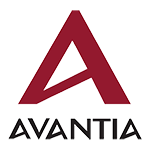What is a LLM & Why Are There So Many?
Large Language Models (LLMs) have rapidly become a central part of the artificial intelligence landscape. You’ve probably heard of ChatGPT, Claude, or Gemini, and you may be wondering what these tools are, how they work, and why the market seems flooded with different options. In this article, we’ll explain what LLMs are, why they matter to businesses, and why so many have entered the scene.
How We Got to Today’s Large Language Models
The journey to LLMs began with the evolution of machine learning and natural language processing (NLP). Early models could recognize simple text patterns or categorize documents. Over time, advances in computing power, access to massive data sets, and innovations in neural network architectures—like the transformer model introduced by Google in 2017—enabled the development of much more powerful language models.
These models are trained on huge volumes of data, learning to predict and generate text with remarkable fluency. As more organizations recognized the potential for automation, summarization, translation, and more, investment and innovation in LLMs exploded.
The Benefits of LLMs for Businesses
LLMs offer significant value to businesses in a wide variety of ways:
- Customer support automation: Powering chatbots and virtual assistants that
understand natural language.
- Internal process efficiency: Summarizing documents, generating reports, or helping
with research.
- Software development acceleration: Assisting with code generation, documentation,
and QA.
- Knowledge management: Making it easier to search and retrieve insights from
internal documentation.
- Personalized experiences: Creating tailored content, emails, and recommendations at
scale.
Used thoughtfully, LLMs can increase productivity, reduce costs, and unlock new service opportunities.
What Exactly Is a Large Language Model?
At its core, a Large Language Model is an AI system trained to understand and generate human language. These models are "large" because they contain billions—or even trillions—of parameters. Parameters are like the brain cells of a model; the more it has, the more nuanced and flexible its understanding becomes.
There are also small language models (SLMs), which are trained on fewer parameters. These models are typically faster and cheaper to run, and are useful for more constrained tasks or on-device processing.
How LLMs Differ from One Another
Despite having similar goals, LLMs vary widely based on a few key attributes:
- Model size: Measured in parameters; affects capabilities and resource requirements.
- Training data: The quality, quantity, and recency of the data influence how well the
model performs.
- Fine-tuning: Many models are adapted for specific domains (e.g., legal, medical) or
use cases.
- Context window: This is how much information a model can consider in a single
interaction. A larger window means it can “remember” more at once.
- Latency and speed: Some models are faster, especially smaller ones or those
optimized for certain environments.
- Cost: Pricing varies by provider and model size. Some charge by token (a unit of text),
while others use subscription models.
- Open vs. closed: Some LLMs are open-source, allowing companies to run them on
their own infrastructure, while others are only available via API.
A Look at the Major LLM Providers
Key players in the LLM market include:
- OpenAI: A leading AI research organization known for its groundbreaking GPT series of models, including GPT-4.5, GPT-4o, GPT-o3, GPT-3.5, and the popular conversational agent ChatGPT.
- Google: A pioneer in AI, offering the Gemini family of multimodal models (including Ultra, Pro, Nano, Flash, and the reasoning-focused Flash Thinking), as well as the open Gemma models.
- Anthropic: Focused on developing safe and ethical AI, Anthropic offers the Claude family of models (including Opus, Sonnet, and Haiku), known for their strong performance and enterprise-grade reliability.
- Meta: The parent company of Facebook and Instagram, Meta has made significant contributions with its open-source Llama family of large language models, widely used for research and commercial applications.
- DeepSeek: A Chinese technology company that has gained attention for its high-performance and efficient reasoning models like DeepSeek R1 and DeepSeek V3, offered as open-source and through APIs.
- Cohere: Focused on providing accessible and customizable language models for businesses, Cohere offers models like Command and Command R+, emphasizing ease of integration and fine-tuning.
- xAI: Founded by Elon Musk, xAI has developed the Grok model, designed for real-world contexts and known for its benchmark-dominating performance, particularly in reasoning tasks.
- Amazon: Through its Amazon Web Services (AWS) platform, Amazon offers access to its own LLMs like Amazon Nova and provides a platform (Bedrock) for accessing models from other leading providers, including Anthropic, Cohere, and Meta.
- Mistral AI: A Paris-based AI company known for its smaller yet high-performing open-weight models like Mistral Large 2 and Mistral Small, offering a compelling alternative to larger proprietary models.
- Alibaba Cloud: A major cloud computing provider, Alibaba Cloud has developed the Qwen series of large-scale language models, including Qwen Max, designed for both text and image processing and excelling in multimodal tasks.
| Provider | Model Name | Max Content Window | Open Source? | Notes | ||||||
|---|---|---|---|---|---|---|---|---|---|---|
| OpenAI | GPT-4o | 128K tokens | No | High performance, commercial APIs | ||||||
| Anthropic | Claude 3.5 Sonnet | 200K tokens | No | Long context, strong reasoning | ||||||
| Gemini 2.5 Pro | 1M+ tokens | No | Exceptional context length | |||||||
| Mistral | Mistral Small 3 | ~32K tokens | No | Efficient, open-weight model | ||||||
| Meta | LLaMA 4 Scout | ~328K tokens | Yes | Open source, strong research support | ||||||
| DeepSeek | DeepSeek V3 | ~64K tokens | Yes | Excels at code generation, debugging and providing personalized learning assistance. |
Why Are There So Many?
The explosion in LLM options is driven by a few main factors:
- Diverse business needs: Not all companies need the largest or most expensive model. Variety allows for right-sized solutions.
- Innovation and competition: The AI field is rapidly evolving, and new entrants constantly push the envelope with new techniques.
- Open-source movement: Open models empower developers and businesses to fine-tune or deploy models with fewer restrictions.
- Cost and control consideration Some businesses want full control over their data and infrastructure, which open models enable.
- Specialization Some models are optimized for specific domains like finance, law, or science.
Ultimately, more options mean businesses can find an LLM that aligns with their goals, budget, and risk tolerance.
Ready to Explore the Power of LLMs?
At Avantia, we help businesses navigate the complex world of LLMs and AI. Whether you're just starting out or looking to optimize an existing solution, our experts can guide you toward the right tools and strategies for your needs. From model selection to integration and governance, we’re here to help you unlock the full potential of AI in your organization.
Let's Talk
Start exploring how Large Learning Models, AI, or Agentic IA can create efficiencies for your
business & enhance the usability of your website.


